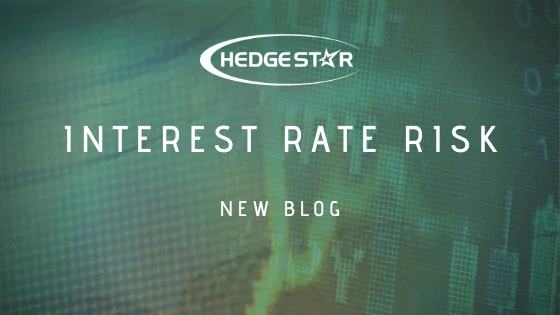Nearly every organization has exposure to interest rate risk on their balance sheet. Understanding interest rate risk, and its various components, is critical to organizations as they evaluate increasing or decreasing their exposure to interest rates in the pursuit of strategic objectives. Interest rate risk can be broken-down into four components:
- Repricing Risk
- Basis Risk
- Yield Curve Risk
- Option Risk
Below is a description of each component.
Repricing Risk
Repricing risk is the risk of changes in an interest rate charged or earned at the time a financial instrument’s rate is reset, or a financial instrument matures and the organization enters into a new financial instrument.
Basis Risk
Basis risk arises when financial instruments with different indices, but otherwise similar characteristics, do not move in unison. For example, assume a financial depository (bank, credit union, etc.) funds loans to its customers and members that are based on 3-month treasury rates with deposits that are based on 3-month Libor. To the extent the two indices change unevenly, the organization would be exposed to basis risk.
Yield Curve Risk
A yield curve is a line that plots yields of bonds having equal credit quality but differing maturity dates. A common yield curve that organizations monitor is the US Treasury curve that plots yields on 1-month to 30-year US Treasury debt obligations. Market changes rarely cause each point on the yield curve to shift up or down in unison. The shape of the yield curve will consistently change due to changes in relationships between interest rates and yields for different maturities. Generally, yield curve shapes can be described as the follows:
- Normal – curve is upward sloping with yields lower in the near-term, and higher in the long-term
- Flat – curve is flat with yields remaining constant or with very little variance in the near-term and long-term
- Inverted – curve is downward sloping with yields higher in the near-term, and lower in the long-term
- Steep – curve slants sharply up or down with significant differences in yields experienced in the short-term relative to the long-term.
Below are illustrative examples of each yield curve shape. As the yield curve changes in shape, organizations face yield curve risk.
An example of an organization experiencing yield curve risk would be a financial depository that brings in short term deposits (i.e. 3-month CDs) and lends long-term, fixed-rate obligations (i.e. 30-year fixed rate mortgages). If this is done in a normal yield curve environment, and the curve then inverts – the organization may experience an erosion of earnings.
Option Risk
In the normal course of business, organizations often execute financial instruments with embedded options. Common forms of options include:
- Bonds and notes with call or put provisions
- Loans that allow borrowers to prepay balances
- Non-maturity deposits that give depositors the right to withdraw funds at any time
As interest rates change, the value of the options will change – and the likelihood or unlikelihood of their exercise will change. The frequency and magnitude of interest rate changes represent volatility, which is a significant input into the market value of options and an organization’s capital calculations.
Interest rate risk, and each of its components, should be understood and monitored by organizations to minimize the possibility of earnings being eroded by changing interest rates.
If you would like to learn more about managing interest rate risk, download our eBook The ABCs of Interest Rate Risk Management at https://www.hedgestar.com/abcs. If you would like to speak to someone about interest rate you can email or call John Trefethen / 952-746-6040.
HedgeStar provides risk management services and related hedge accounting and valuation services. To learn more visit www.hedgestar.com.


